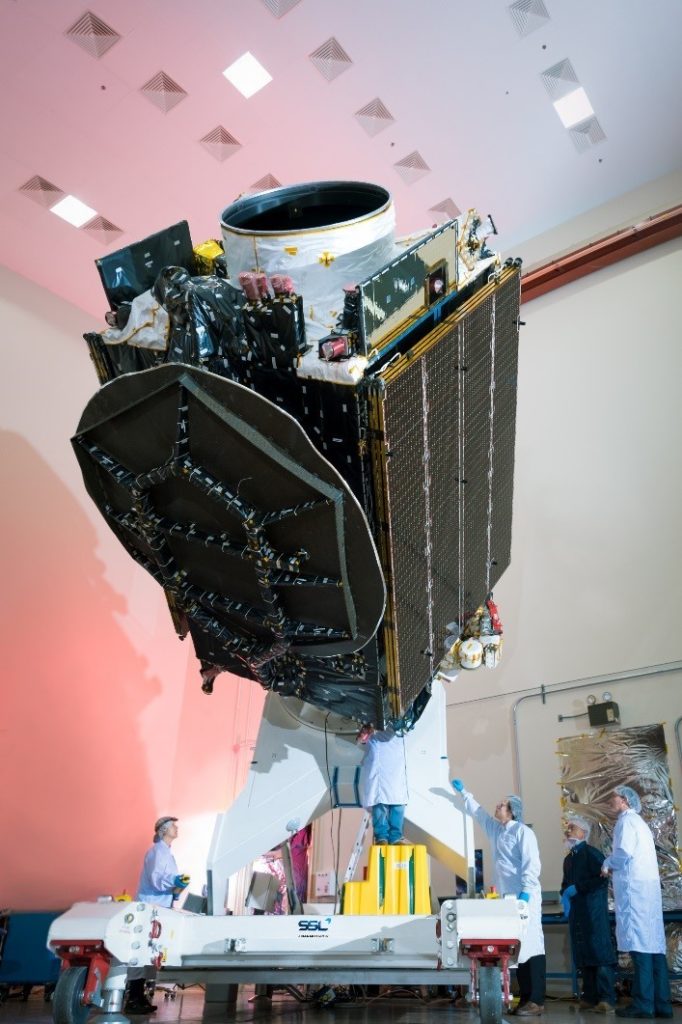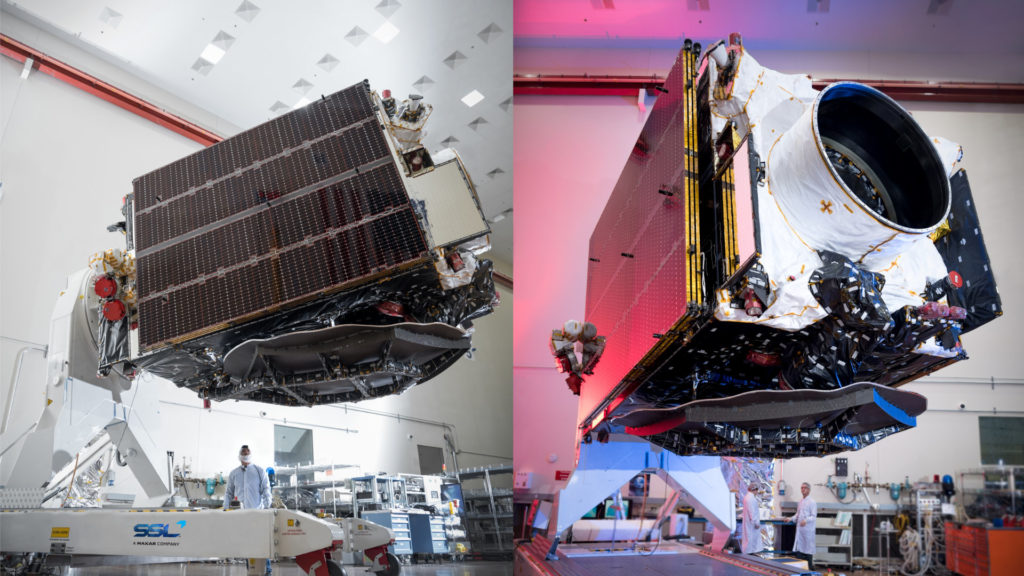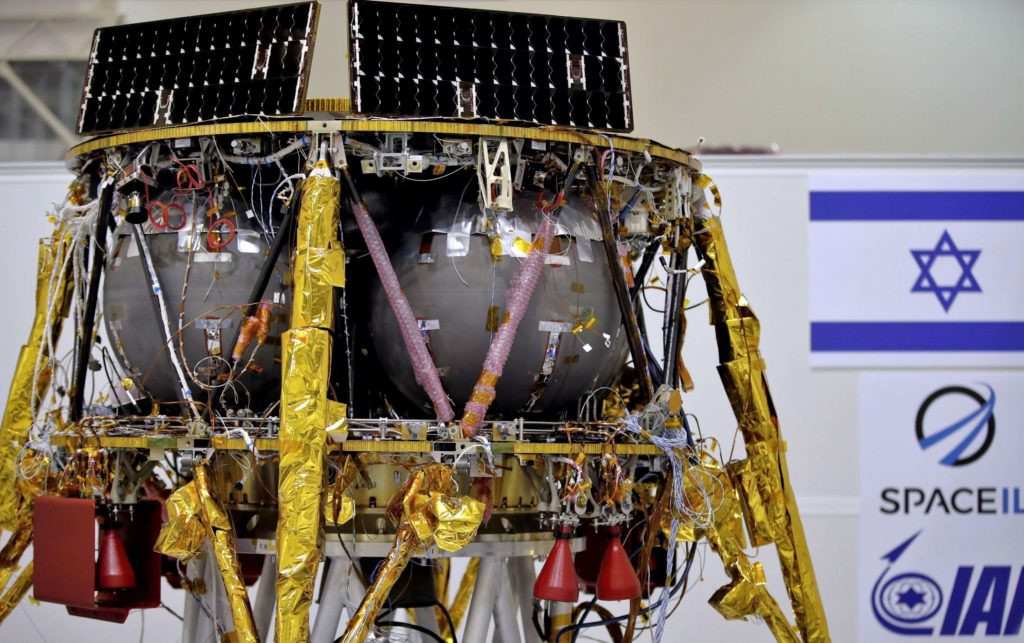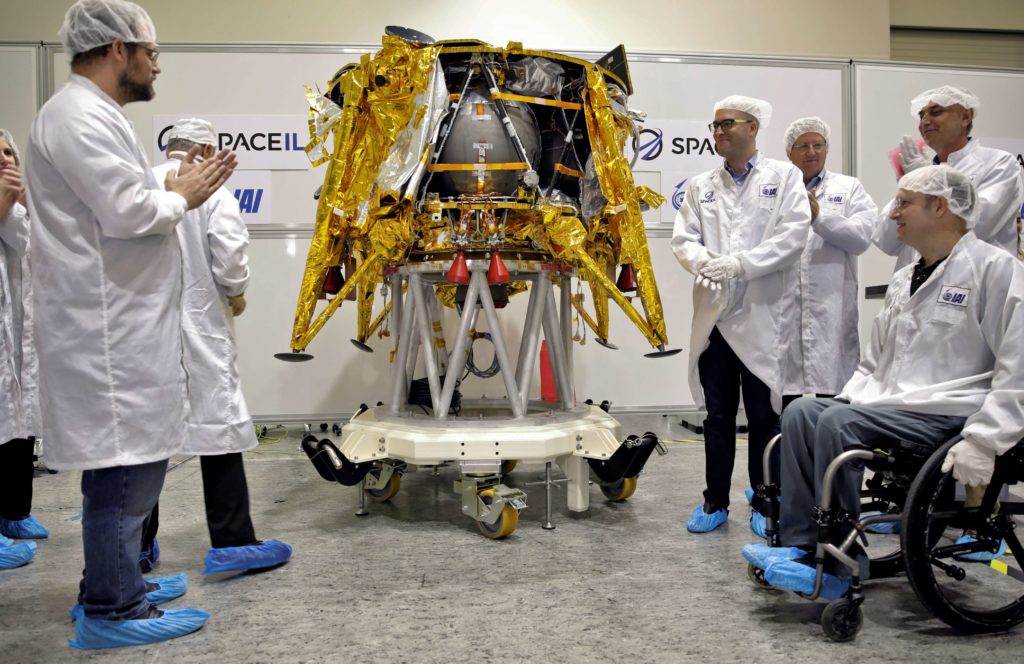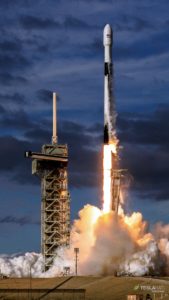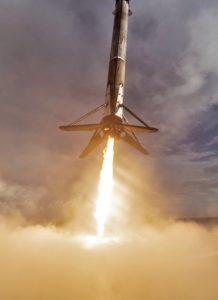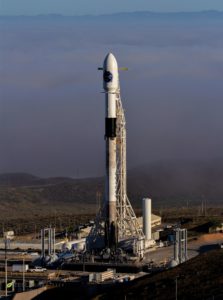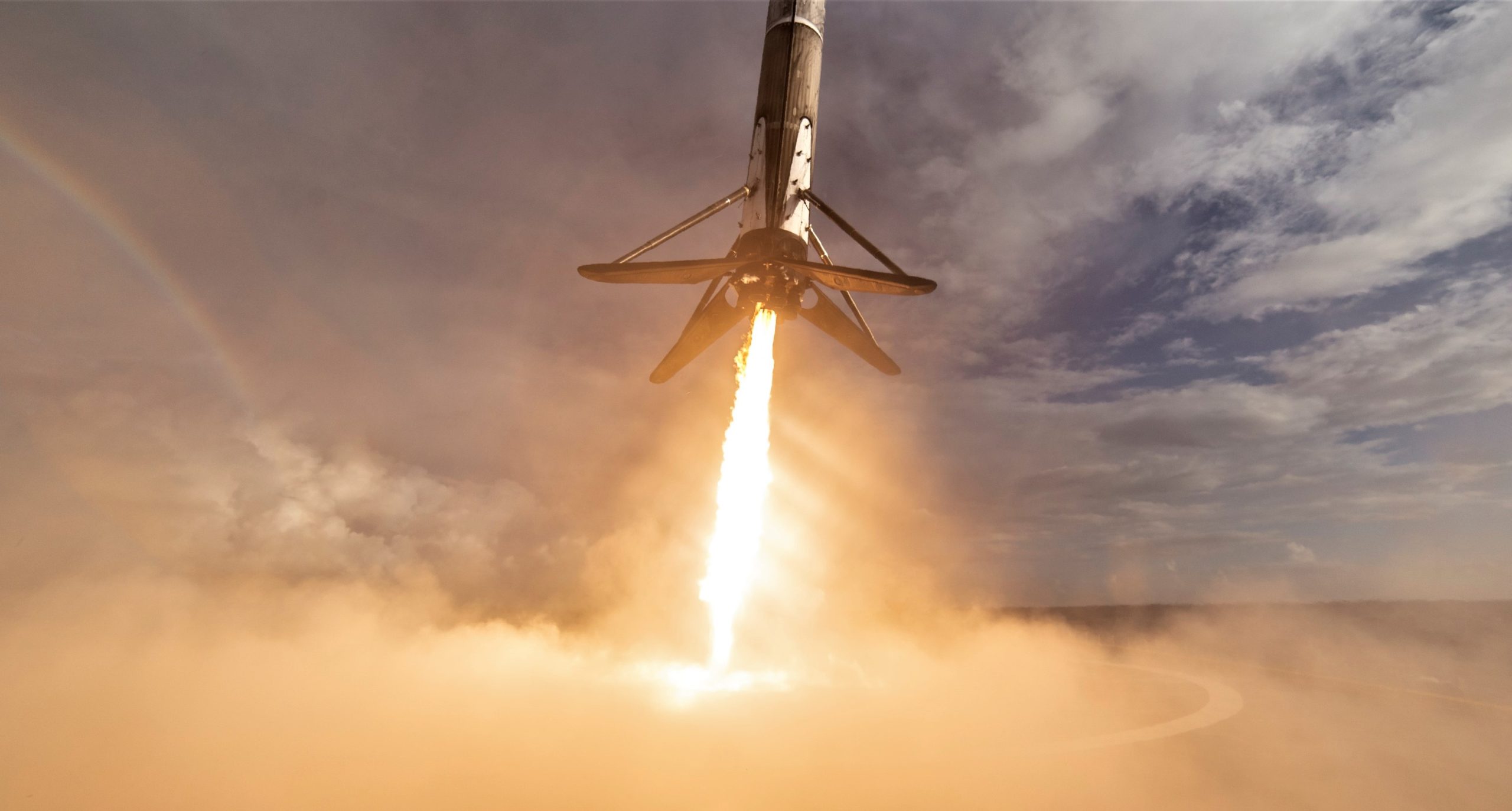
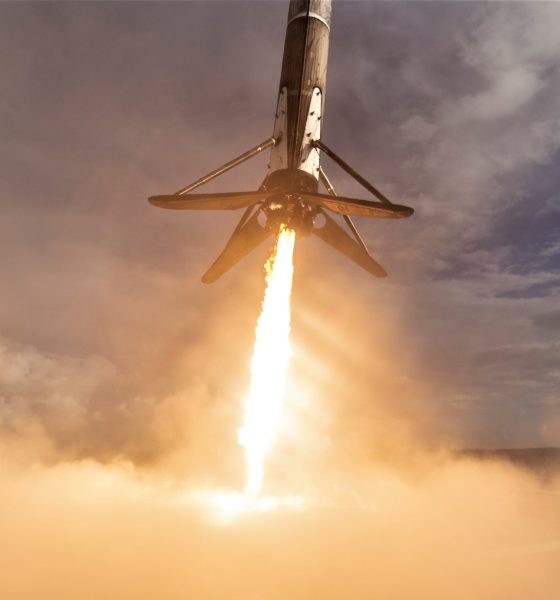
News
SpaceX nears Falcon 9 lunar rideshare launch as main satellite arrives in FL
SpaceX and customers Pasifik Satelit Nusantara (PSN), SpaceIL, and Spaceflight Industries are reportedly one month away from the NET February 18th launch of Indonesian communications satellite PSN VI (since renamed Nusantara Satu), commercial moon lander Beresheet, and additional unspecified smallsats.
In an encouraging sign that the mission’s launch date might hold, the PSN VI communications satellite – manufactured and delivered by Space Systems Loral (SSL) – arrived at SpaceX’s Cape Canaveral, Florida payload processing facilities in late December 2018 and is likely to be joined by SpaceIL’s Beresheet spacecraft in the next few weeks.
https://twitter.com/sslmda/status/1082427646921846784
Easily the most exotic rideshare mission yet in terms of the sheer variability and newness of almost every aspect, communications satellite PSN VI will not only be joined by the world’s first commercial lunar lander but also play host to rideshare organizer Spaceflight’s first dedicated rideshare mission to a high-energy geostationary transfer orbit (GTO), stretching approximately 200 to 36,000 km (120 to 22,000 miles) above Earth.
Led in large part by satellite contractor SSL’s recently-introduced PODS method of attaching rideshare satellite dispensers to larger geostationary satellites, the company’s main manufacturing focus, GTO or even full-GEO rideshare opportunities could open all kinds of doors for exotic but affordable smallsat missions beyond Earth orbit. If successfully implemented, one could foresee commercial, government, or academic entities with budgets that would have originally had them laughed out of doors actually be able to support their own dedicated missions to the Moon and perhaps even to other planets, asteroids, or comets.
Big Science, Small Packages
A pair of tiny, experimental spacecraft called #MarCO flew to Mars and fulfilled a their mission yesterday, relaying near-real-time data during @NASAInSight’s #MarsLanding. Find out more about the record-setting CubeSats: https://t.co/JOAaM2lHjx pic.twitter.com/IlNesoEonq— NASA JPL (@NASAJPL) November 27, 2018
Less than coincidentally, JPL (Jet Propulsion Laboratory) successfully launched, tested, and demonstrated a pair of small signal relay cubesats as viable communications infrastructure during Mars lander InSight’s November 2018 landing attempt, becoming the first smallsats ever to operate in deep space. While the utility of each MarCO cubesat was very limited, the program was an extremely successful technology demonstration and has likely opened a number of doors for smallsat passengers to join future interplanetary missions. Already, the European Space Agency (ESA) hopes to include multiple cubesats on an asteroid defense-focused mission to the Didymous asteroid system in the 2020s.
A couple of #CubeSats will join #ESA’s Hera mission towards a binary asteroid system to perform additional bonus science alongside the main mothership. #newspace #cubesat #space https://t.co/gu3BS4sgL0 pic.twitter.com/13iw7gh1u6
— D-Orbit (@D_Orbit) January 8, 2019
While SSL apparently tested PODS with success on the communications satellite Hispasat 30W-6, launched by SpaceX in March 2018, it appears that PSN VI may be the first purely commercial use of SSL’s offerings. Whatever the complex relationship is, it appears that PSN VI’s PODS were co-opted (ordered?) by Spaceflight, who then sold those spaces and managed the integration of customers with spacecraft that needed an orbit truly unique for cubesats.
Given the fact that there has been almost complete silence on Spaceflight’s GTO-1 rideshare mission and that the most recent use of PODS on Hispasat was reportedly funded and used by military research agency DARPA, it may actually be reasonable to conclude that Spaceflight is acting as the middleman for a number of satellites built or owned by military agencies, potentially explaining the radio-silence from Spaceflight’s normally talkative communications team.
- PSN-6, an SSL-built communications satellite weighing several thousand kilograms, arrived in Florida roughly 10 days ago. (SSL)
- PSN-6, an SSL-built communications satellite weighing several thousand kilograms, arrived in Florida roughly 10 days ago. (SSL)
- SpaceIL’s Beresheet moon lander. (SpaceIL)
- Beresheet is seen here prior to the spacecraft’s flight from Israel to Florida. (SpaceIL/IAI)
Regardless, this launch is bound to be a fascinating one from a trajectory design perspective. Whether or not Falcon 9’s upper stage is actually going to be involved in the task of helping lunar lander Beresheet on its way to the Moon, info from manufacturer and operator SpaceIL suggests that the small ~600 kg spacecraft will rely on an eccentric method of shifting orbits from around the Earth to intercept the Moon. Over the course of several months of small nudges in the right direction, Beresheet will eventually – and very gradually – oscillate on the tip of the gravitational peak between the two planetary bodies until it eventually slips down the lunar side to eventually intercept the Moon. While very slow, this optimized trajectory will be extremely efficient, allowing as much propellant as possible to be saved for the actual task of landing on the Moon.
Which rocket slipper fits?
Come launch day, the combined mass of PSN VI (Nusantara Satu), Beresheet, and unknown rideshare passenger spacecraft will most likely fall somewhere between 5500 and 6000 kg (~12,000-13,500 lbs), indicating that SpaceX’s Falcon 9 should be more than capable of placing the stack of satellites into a healthy geostationary transfer orbit before attempting to land aboard drone ship Of Course I Still Love You (OCISLY).
- Pad 39A seen after most extraneous Shuttle-era hardware had been removed, November 2018. (Tom Cross)
- Falcon 9 B1047.2 is seen here conducting its second successful drone ship landing. (SpaceX)
- Falcon 9 B1048 appears out of the fog prior to its second orbital-class launch. (Pauline Acalin)
- Falcon 9 B1048.2 landed at LZ-4 after its second successful launch. (SpaceX)
The question that remains, then, is which Falcon 9 rocket will be tasked with launching the unique mission. Given that SpaceX appears to be rushing full-speed-ahead to complete the next Falcon Heavy in time for a late-February or March launch debut, it seems very unlikely that SpaceX could preserve that aggressive FH launch schedule while also preparing a separate, new Falcon 9 booster for PSN VI. If that’s the case, then the two options at hand are Falcon 9s B1047.3 and B1048.3, both of which have previously launched twice and are currently at SpaceX’s Florida facilities.
In other words, it appears that SpaceX’s first commercial launch to the Moon might lift off on a flight-proven Falcon 9 booster, an unintended but thoroughly fitting precursor to what is hopefully a future full of highly reusable rockets and interplanetary (as in between two or more planetary bodies) spaceflight.

News
Tesla FSD fleet is nearing 7 billion total miles, including 2.5 billion city miles
As can be seen on Tesla’s official FSD webpage, vehicles equipped with the system have now navigated over 6.99 billion miles.

Tesla’s Full Self-Driving (Supervised) fleet is closing in on almost 7 billion total miles driven, as per data posted by the company on its official FSD webpage.
These figures hint at the massive scale of data fueling Tesla’s rapid FSD improvements, which have been quite notable as of late.
FSD mileage milestones
As can be seen on Tesla’s official FSD webpage, vehicles equipped with the system have now navigated over 6.99 billion miles. Tesla owner and avid FSD tester Whole Mars Catalog also shared a screenshot indicating that from the nearly 7 billion miles traveled by the FSD fleet, more than 2.5 billion miles were driven inside cities.
City miles are particularly valuable for complex urban scenarios like unprotected turns, pedestrian interactions, and traffic lights. This is also the difference-maker for FSD, as only complex solutions, such as Waymo’s self-driving taxis, operate similarly on inner-city streets. And even then, incidents such as the San Francisco blackouts have proven challenging for sensor-rich vehicles like Waymos.
Tesla’s data edge
Tesla has a number of advantages in the autonomous vehicle sector, one of which is the size of its fleet and the number of vehicles training FSD on real-world roads. Tesla’s nearly 7 billion FSD miles then allow the company to roll out updates that make its vehicles behave like they are being driven by experienced drivers, even if they are operating on their own.
So notable are Tesla’s improvements to FSD that NVIDIA Director of Robotics Jim Fan, after experiencing FSD v14, noted that the system is the first AI that passes what he described as a “Physical Turing Test.”
“Despite knowing exactly how robot learning works, I still find it magical watching the steering wheel turn by itself. First it feels surreal, next it becomes routine. Then, like the smartphone, taking it away actively hurts. This is how humanity gets rewired and glued to god-like technologies,” Fan wrote in a post on X.
News
Tesla starts showing how FSD will change lives in Europe
Local officials tested the system on narrow country roads and were impressed by FSD’s smooth, human-like driving, with some calling the service a game-changer for everyday life in areas that are far from urban centers.

Tesla has launched Europe’s first public shuttle service using Full Self-Driving (Supervised) in the rural Eifelkreis Bitburg-Prüm region of Germany, demonstrating how the technology can restore independence and mobility for people who struggle with limited transport options.
Local officials tested the system on narrow country roads and were impressed by FSD’s smooth, human-like driving, with some calling the service a game-changer for everyday life in areas that are far from urban centers.
Officials see real impact on rural residents
Arzfeld Mayor Johannes Kuhl and District Administrator Andreas Kruppert personally tested the Tesla shuttle service. This allowed them to see just how well FSD navigated winding lanes and rural roads confidently. Kruppert said, “Autonomous driving sounds like science fiction to many, but we simply see here that it works totally well in rural regions too.” Kuhl, for his part, also noted that FSD “feels like a very experienced driver.”
The pilot complements the area’s “Citizen Bus” program, which provides on-demand rides for elderly residents who can no longer drive themselves. Tesla Europe shared a video of a demonstration of the service, highlighting how FSD gives people their freedom back, even in places where public transport is not as prevalent.
What the Ministry for Economic Affairs and Transport says
Rhineland-Palatinate’s Minister Daniela Schmitt supported the project, praising the collaboration that made this “first of its kind in Europe” possible. As per the ministry, the rural rollout for the service shows FSD’s potential beyond major cities, and it delivers tangible benefits like grocery runs, doctor visits, and social connections for isolated residents.
“Reliable and flexible mobility is especially vital in rural areas. With the launch of a shuttle service using self-driving vehicles (FSD supervised) by Tesla in the Eifelkreis Bitburg-Prüm, an innovative pilot project is now getting underway that complements local community bus services. It is the first project of its kind in Europe.
“The result is a real gain for rural mobility: greater accessibility, more flexibility and tangible benefits for everyday life. A strong signal for innovation, cooperation and future-oriented mobility beyond urban centers,” the ministry wrote in a LinkedIn post.
News
Tesla China quietly posts Robotaxi-related job listing
Tesla China is currently seeking a Low Voltage Electrical Engineer to work on circuit board design for the company’s autonomous vehicles.

Tesla has posted a new job listing in Shanghai explicitly tied to its Robotaxi program, fueling speculation that the company is preparing to launch its dedicated autonomous ride-hailing service in China.
As noted in the listing, Tesla China is currently seeking a Low Voltage Electrical Engineer to work on circuit board design for the company’s autonomous vehicles.
Robotaxi-specific role
The listing, which was shared on social media platform X by industry watcher @tslaming, suggested that Tesla China is looking to fill the role urgently. The job listing itself specifically mentions that the person hired for the role will be working on the Low Voltage Hardware team, which would design the circuit boards that would serve as the nervous system of the Robotaxi.
Key tasks for the role, as indicated in the job listing, include collaboration with PCB layout, firmware, mechanical, program management, and validation teams, among other responsibilities. The role is based in Shanghai.
China Robotaxi launch
China represents a massive potential market for robotaxis, with its dense urban centers and supportive policies in select cities. Tesla has limited permission to roll out FSD in the country, though despite this, its vehicles have been hailed as among the best in the market when it comes to autonomous features. So far, at least, it appears that China supports Tesla’s FSD and Robotaxi rollout.
This was hinted at in November, when Tesla brought the Cybercab to the 8th China International Import Expo (CIIE) in Shanghai, marking the first time that the autonomous two-seater was brought to the Asia-Pacific region. The vehicle, despite not having a release date in China, received a significant amount of interest among the event’s attendees.
